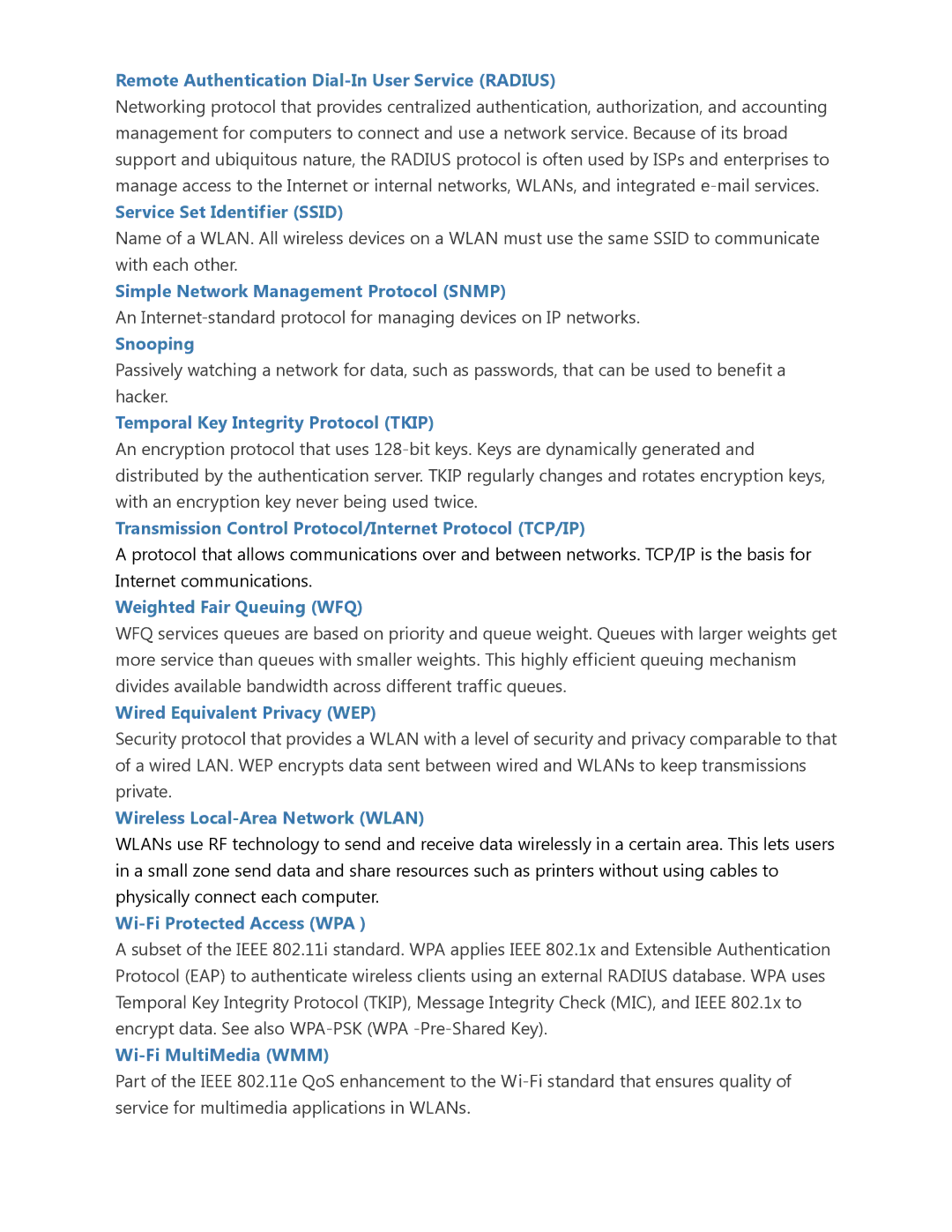Remote Authentication Dial-In User Service (RADIUS)
Networking protocol that provides centralized authentication, authorization, and accounting management for computers to connect and use a network service. Because of its broad support and ubiquitous nature, the RADIUS protocol is often used by ISPs and enterprises to manage access to the Internet or internal networks, WLANs, and integrated
Service Set Identifier (SSID)
Name of a WLAN. All wireless devices on a WLAN must use the same SSID to communicate with each other.
Simple Network Management Protocol (SNMP)
An
Snooping
Passively watching a network for data, such as passwords, that can be used to benefit a hacker.
Temporal Key Integrity Protocol (TKIP)
An encryption protocol that uses
Transmission Control Protocol/Internet Protocol (TCP/IP)
A protocol that allows communications over and between networks. TCP/IP is the basis for Internet communications.
Weighted Fair Queuing (WFQ)
WFQ services queues are based on priority and queue weight. Queues with larger weights get more service than queues with smaller weights. This highly efficient queuing mechanism divides available bandwidth across different traffic queues.
Wired Equivalent Privacy (WEP)
Security protocol that provides a WLAN with a level of security and privacy comparable to that of a wired LAN. WEP encrypts data sent between wired and WLANs to keep transmissions private.
Wireless Local-Area Network (WLAN)
WLANs use RF technology to send and receive data wirelessly in a certain area. This lets users in a small zone send data and share resources such as printers without using cables to physically connect each computer.
Wi-Fi Protected Access (WPA )
A subset of the IEEE 802.11i standard. WPA applies IEEE 802.1x and Extensible Authentication Protocol (EAP) to authenticate wireless clients using an external RADIUS database. WPA uses Temporal Key Integrity Protocol (TKIP), Message Integrity Check (MIC), and IEEE 802.1x to encrypt data. See also
Wi-Fi MultiMedia (WMM)
Part of the IEEE 802.11e QoS enhancement to the
